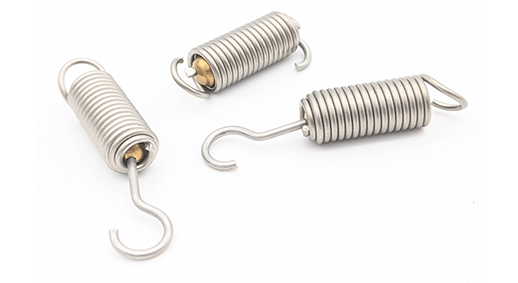Get unique, complex parts easily. No matter your requirements, Chaoyi Spring creates hard-to-produce coil springs and wire forms.
Let us help you create the custom wire form you need, from S-hooks and J-hooks to utility hooks and more.
We work closely with customers across a wide range of industries, helping them design and manufacture made-to-order parts.
Why choose Chaoyi Spring? We prioritize customer-focused collaboration, modern equipment and the latest technology to make your parts per print.
Find the information and guidance you need, from measuring a spring to learning about materials, placing an order and much more.
When it comes to suspension systems, two popular choices for providing support and damping are torsion bars and coil springs. Both systems have their unique advantages and disadvantages, making the


When it comes to suspension systems, two popular choices for providing support and damping are torsion bars and coil springs. Both systems have their unique advantages and disadvantages, making the choice between them dependent on the specific vehicle application and intended use. This article will delve into a comprehensive comparison of torsion bars and coil springs, exploring their fundamental principles, pros and cons, and real-world applications.

Torsion bars are essentially long, solid steel rods that twist when subjected to a load. They are typically mounted horizontally, with one end fixed to the chassis and the other connected to the suspension arm. When the wheel encounters a bump, the suspension arm rotates, twisting the torsion bar. This twisting action provides resistance, absorbing the impact and returning the wheel to its original position.
Torsion bars are often found in trucks, SUVs, and some sports cars due to their ability to provide a high spring rate. A high spring rate means that the suspension is stiff, offering better handling and control, especially at high speeds. However, this stiffness also comes at the cost of a less comfortable ride, especially on rough roads.
Coil springs are helical springs made of coiled steel wire. They function by compressing and extending, providing vertical support and damping the shocks from the road. They are typically mounted vertically, with one end attached to the chassis and the other connected to the suspension arm. When the wheel encounters a bump, the coil spring compresses, absorbing the impact, and then expands, returning the wheel to its original position.
Coil springs are highly versatile and can be engineered to provide a wide range of spring rates. This makes them suitable for various applications, from comfortable passenger cars to high-performance sports cars. They offer a good balance of ride comfort and handling, and they are generally easier to adjust and replace compared to torsion bars.
To gain a deeper understanding of the differences between torsion bars and coil springs, let's examine their key characteristics in more detail:
In terms of ride comfort, coil springs generally provide a smoother and more comfortable ride, especially on rough roads. This is because coil springs are typically softer than torsion bars, allowing for more movement and absorption of bumps. Torsion bars, on the other hand, tend to be stiffer, providing a more controlled and responsive ride but sacrificing comfort.
When it comes to handling and control, torsion bars often have the upper hand. Their higher spring rate allows for greater stiffness, resulting in more precise steering and improved cornering capabilities. This is why torsion bars are often favored in high-performance vehicles and off-road trucks. However, coil springs can still provide excellent handling, especially with proper tuning and the use of anti-roll bars.
Coil springs are generally easier to maintain and replace than torsion bars. They are readily available, and their replacement involves simply removing and installing the new springs. Torsion bars, on the other hand, often require specialized tools and knowledge to adjust or replace. This can make maintenance more expensive and time-consuming.
Torsion bars are typically lighter than coil springs, which can be advantageous in terms of fuel efficiency and overall vehicle weight. This weight savings can be particularly beneficial in off-road vehicles where weight is a critical factor.
Torsion bars and coil springs are widely used in various types of vehicles. Here are some real-world examples:
Torsion bars are often found in:
Coil springs are commonly used in:
Ultimately, the choice between torsion bars and coil springs depends on the specific application and intended use. Torsion bars offer a stiffer ride with better handling, while coil springs provide a more comfortable ride with versatility in tuning. When considering your next vehicle, understanding the pros and cons of each suspension system will help you make an informed decision that aligns with your driving needs and preferences.
By carefully considering the characteristics and advantages of both torsion bars and coil springs, you can choose the suspension system that best meets your requirements for ride comfort, handling, and overall driving experience.
Browse some of the custom wire forms and springs that we manufacture. Don’t see what you need? We specialize in made-to-order products that meet your application requirements.
Visit Our GalleryNeed a custom wire form or coil spring? We make it work. Fill out the contact form and a representative will respond within 1 business day. If you have a PDF or CAD file, you can submit to request a quote.